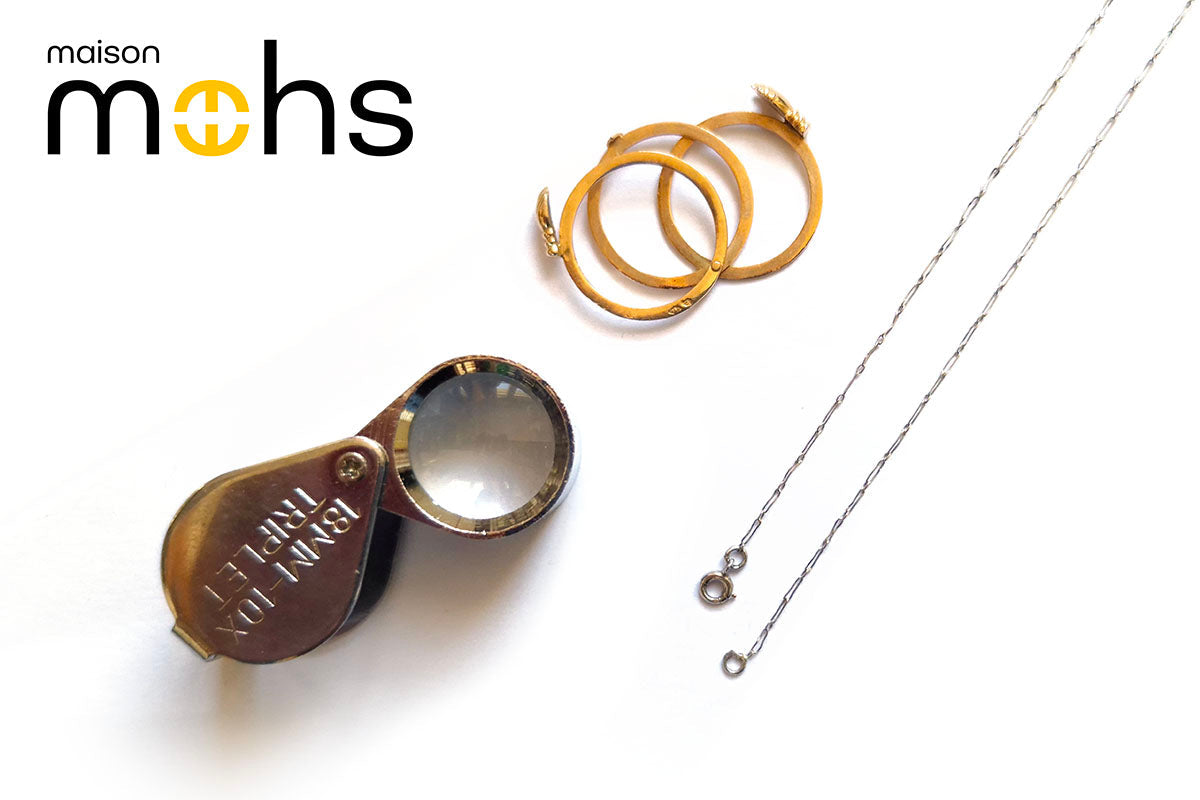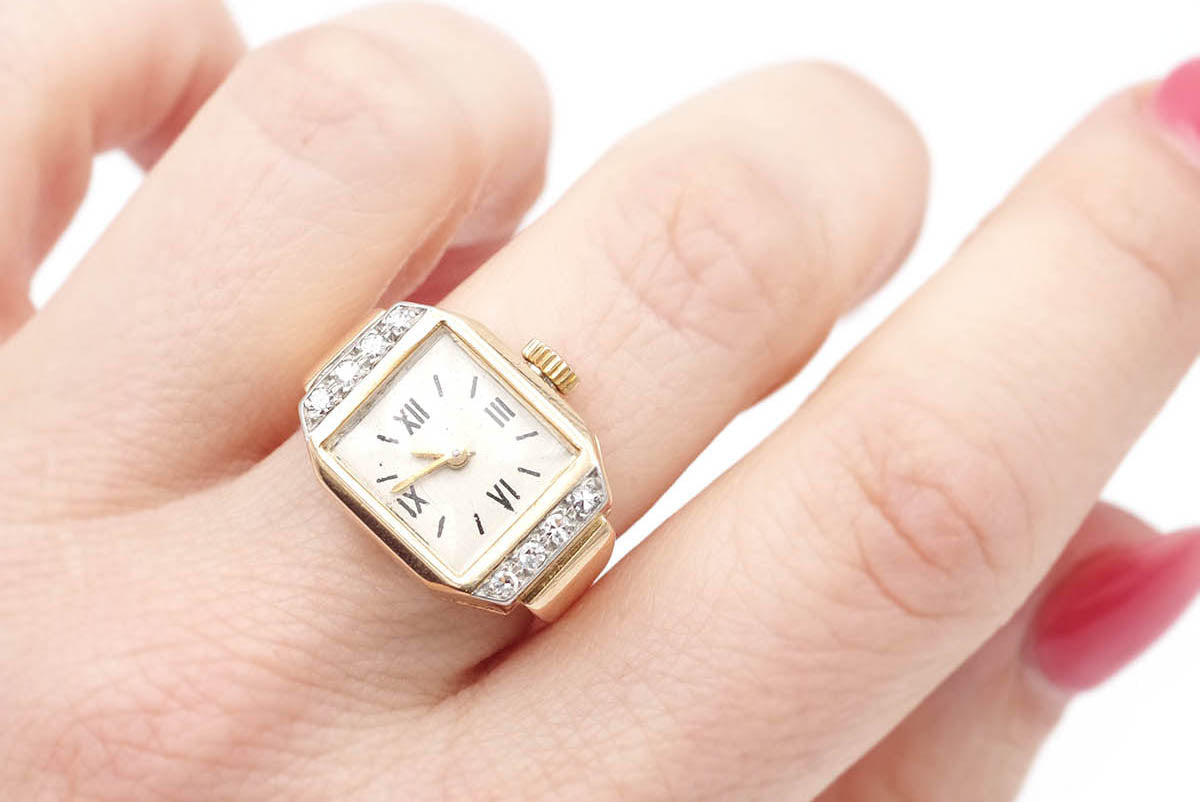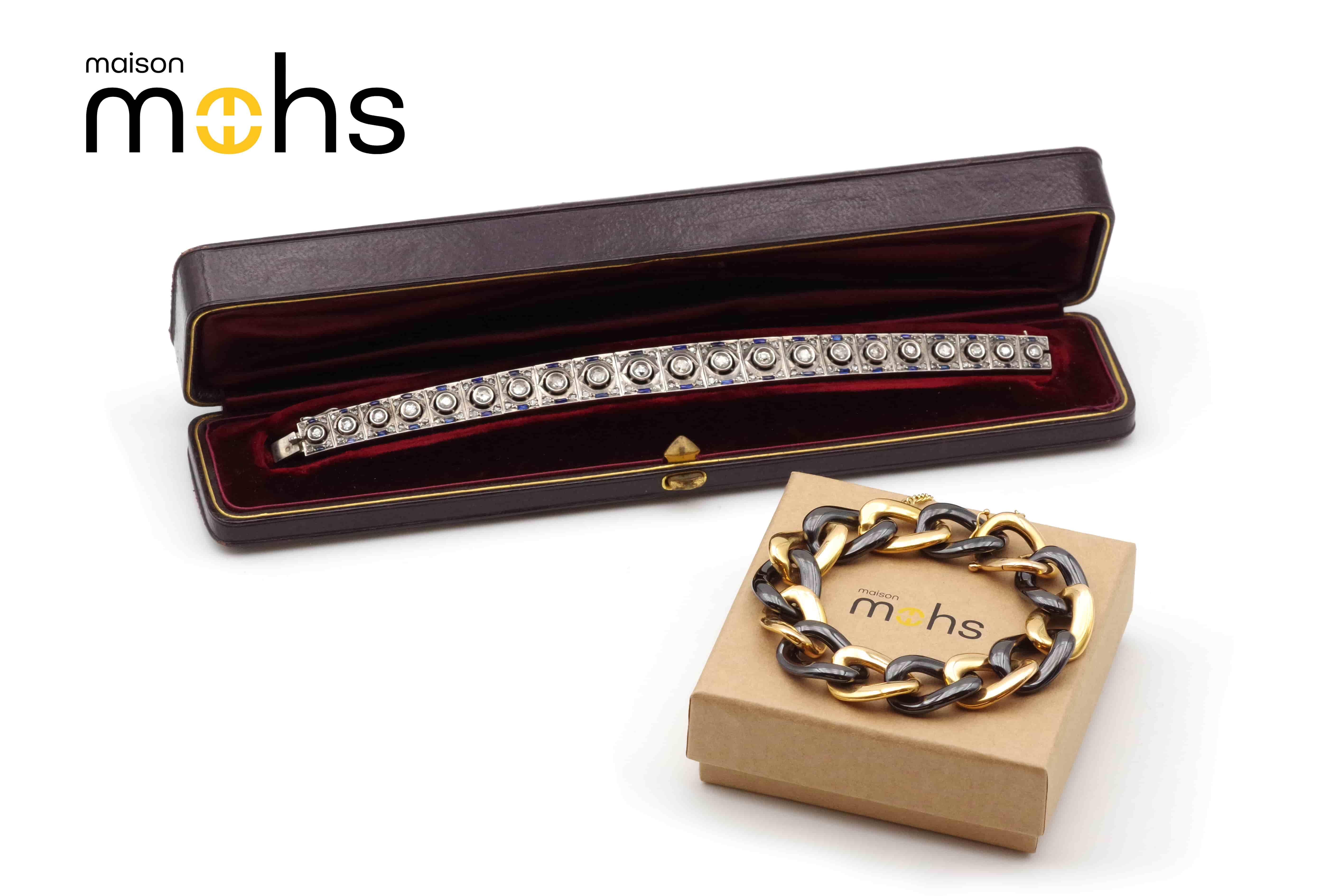
Silver, platinum, or gold plating? Learn how to identify the metals in your jewelry
When you buy or inherit an antique jewel, it's essential to identify the precious metal it's made of silver, platinum, or simply plated metal? Knowing the difference can save you from disappointment and help you accurately assess its value. Here are some foolproof tips for identifying the metals in your antique jewelry.
Identifying silver: hallmarks and appearance
Silver is a precious metal that is very common in jewelry, but it exists in different forms: solid silver, sterling silver (925), or plated silver.
How to recognize a silver jewel?
-
Look for the hallmarks
In France and Europe, solid silver bears official hallmarks, such as the head of Minerva, the crab hallmark, the boar's head or the number "925" indicating sterling silver.
-
Observe the oxidation
Silver oxidizes when exposed to air and moisture, which can cause the metal to turn black, which can be easily cleaned.
-
Take the magnet test
Silver is not magnetic. If your jewelry is attracted to a magnet, it is not solid silver.

Identifying platinum: a rare and precious metal
Platinum is a rarer and often more expensive metal than gold. It was used for high-end jewelry and was distinguished by its strength and unique gray color.
How to recognize a platinum jewel?
-
Look for a specific punch
In France, platinum is marked with a dog/wolf's head, a mascaron's head, the word PT or the number "950".
-
Observe its weight
Platinum is denser than gold and silver, so a piece of platinum jewelry will be heavier than its gold equivalent.
-
Analyze its color
Unlike silver, platinum does not tarnish or yellow over time.
Identifying plated metal: beware of deception
Plated metal jewelry (silver or gold) has a thin layer of precious metal covering a base metal (brass, copper, various alloys). This layer can wear away over time, revealing the underlying metal.
How to recognize a plated metal jewel?
-
Observe the wear areas
If the jewelry has areas where the color differs, it is probably plating.
-
Check the punches or their absence
Plated jewelry has a specific square hallmark, sometimes it does not have a hallmark. The square hallmark often bears the initials of the master maker, sometimes accompanied by the numbers 10, 14, 18, or 20, which correspond to the carats of gold used for plating. There are also the terms FIX and ORIA, which are old brands specializing in antique gold-plated jewelry.
-
Perform the acid test (with a professional)
A small application of acid to an inconspicuous area can reveal if the precious metal is only on the surface.

Why it is important to correctly identify your jewelry
Knowing how to distinguish between silver, platinum, and plated metal is essential for understanding the true value of your antique jewelry. This prevents you from overpaying for a piece of jewelry, thinking it's made of precious metal when it isn't. If in doubt, don't hesitate to consult a jewelry expert or specialized antique dealer.
Looking to buy or sell antique jewelry with confidence? Discover our collection and benefit from our expertise to ensure the quality and authenticity of each piece!
Take an appointment using our form








